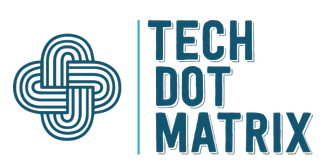
Hackers today are more advanced than ever. They have thetools that even most antivirus software can’t detect. But it doesn’t mean you can’t beat them in their tracks.
Today, various tools enable individuals as well as businesses to protect their online identity from these attacks. Knowing about them goes a long way in securing your website from cyberattacks.
So, if you have created your first website and are unsure how to secure it, this guide is here to help you.
In this blog, you will learn everything you need to secure your website, including diverting DDoS attacks, adding security protocols, and limiting SQL injections.
Best Ways to Secure a Website against Attacks
Let’s learn about the best ways to secure a website against hacking attempts:
1. Keep CMS Updated
First and foremost, keep your site’s CMS updated. Most websites today use WordPress, Magento, and other Content Management Software (CMS).
The best part about these softwares is that they are always getting patched for the latest security loopholes by the development teams.
If your website is not secure, then you can use the updates provided by these CMS to secure them. This way, most of the loopholes will automatically get solved.
2. Use the latest version of PHP
What we mean here is to use the latest and the most stable version of PHP. Just like CMS software, PHP is also rolling out the latest versions to fixsecurity loopholes on the server levels.
Hackers can use PHP based scripts to gain entry directly to the servers. The latest versions remove these loopholes through secure patches. So, it is always better to keep the latest version of PHP on your website.
If you are on shared hosting, you may need to ask your hosting support team to get the latest version of PHP.
3. Limit SQL Injections
SQL injection allows users to run queries on a website directly from their browsers. Websites that don’t have parameterized SQL queries and limited URL customization can face SQL injection attacks.
The best method to limit SQL injections is to redirect all results that are in common values to the home page. So, the hackers trying to run SQL injections won’t be able to run any queries at all, and only queries that you have assigned through filters will run
You can also mask the SQL based URLs so that the queries running on the server level don’t show to the users.
4. Add a CDN
The next thing you should do is to add a Content Delivery Network (CDN) on your website. A CDN improves your content delivery speed, and also saves you from hacking attempts.
Many hackers use DDoS attacks on websites, and CDN help divert these attacks by limiting the number of hits the server can get from a specific website.
Since there are too many hacking attempts, it is always a good idea to use a CDN service that offers much-needed security.
5. Avoid DDoS Attacks
A distributed denial-of-service (DDoS) attack is an attempt by hackers to disrupt traffic on a server by flooding it with overwhelming traffic. There are two things you can do to avoidDDoS attacks.
- Create a DDoS prevention plan:It will include the protocols that you need to follow in case a DDoS attack occurs on your website.
- Solidify your hosting infrastructure: It includes having the required firewalls in place to minimize the damage of the DDoS attack. Firewalls like AVG internet security provides maximum protection to the servers against the threat of DDoS attacks.
Having these protocols in place would save your website from being inoperable in case of a DDoS attack.
6. Switch to HTTPS
Another way to keep hackers from stealing information from your website is by using an SSL certificate. An SSL certificate ensures that all information sent from your site to the payment gateway is completely secure.
You can use the free SSL certificate online to secure your communication. If you want an organization level SSL certificate, then you can also use the Comodo SSL certificate.
7. Add 2FA
Adding a Two-factor Authentication (2FA) on your website will also allow you to secure passwords on your website. In most cases, hackers use brute force attempts through RAT software to crack passwords.
When there is a 2FA installed on the website, it gets difficult for them to gain entries to the site because even if they attempt to crack the password, the code is required to enter. It ensures that the site remains secure at all times.
8. Alter URL of Admin Access page
Most websites have a simple admin page that everyone can access. For example, on WordPress, everyone knows that the admin page is ‘Url.com/wp-admin.’
You don’t want hackers to get to this page easily. So the best option is to hide this page completely so that hackers cannot gain entry to this page.
There are many plugins available that can hide the admin access page. You can do it manually as well by adding scripts to your website.
9. Only use a single admin for SSH or FTP Module
Managing multiple admins with root access can become a problem if your website is accessed by multiple people. So, you should only have one root access administrator account.
All other accounts should have limited access to the SSH. This would only allow you as the admin to make major changes to the website.
You can allow others access to specific folders through the FTP module. This way, even if a hacker gets the credentials of one of the users, they won’t be able to cause any major damage.
10. Whitelist IP Addresses
Another way to secure your website is by adding the whitelisting IP address feature. Most hosting services offer whitelisting IP addresses service.
With whitelist IP, you can designate only a few IP addresses to make changes to the core files of the website. All other IP addresses will be banned from accessing the root files.
It means that hackers will have to be physically present at your location to hack your website, which isimprobable as most hacks take place form remote and undisclosed locations.
11. Protect against XSS attacks
Finally, limit cross-site scripting on your website. With cross-site scripting (XSS), hackers can inject malicious code on your site’s input fields. These can be inthe comments box, subscriber box, or complaint box.
If these sections allow the execution of JavaScript, the hackers can gain access to other user’s accounts that use those sections to make entries.
Current programming languages such as Angular JS, Node JS, and others provide XSS protection.
Bottom-line
Stay updated with the latest security measures and keep implementing them on your website to stay safe online. With these measures, you can improve the security of your website. So, make sure you implement them all to ensure maximum security.
You might also like our TUTEZONE section which contains exclusive tutorials on how you can make your life simpler using technology.




